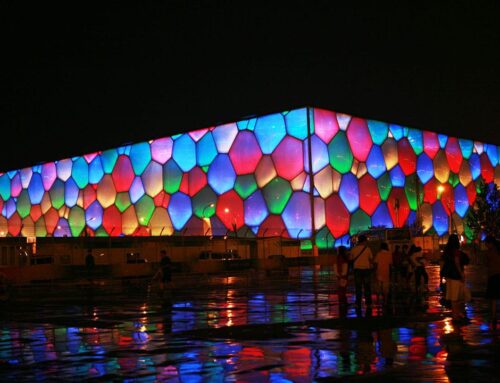Exploring LED Screens: A Comprehensive Introduction
LED screens have transformed the way we view digital content, casting a vivid array of light and color across a multitude of platforms – from billboards in bustling city squares to the smartphone in your pocket.
They blend sophisticated technology with energy-efficient design, offering a crisp, dynamic viewing experience that stands in sharp contrast to older display types.
At the heart of an LED screen is an intricate dance of light, color, and electronics, all working in harmony to bring your digital world to life.
In this article, we’ll dive deep into the glowing world of LED screens, unraveling their mysteries and exploring their incredible potential.
What is an LED Screen?

An LED screen, at its core, encapsulates an advanced technology that leverages light-emitting diodes (LEDs) as pixels to generate vivid, dynamic images.
Unlike traditional display devices that might use fluorescent lamps or incandescent light bulbs, an LED display employs a vast array of LEDs, providing unparalleled brightness and color accuracy.
This technology spans a wide spectrum of applications, from the immersive experience of large-format digital signage in public spaces to the personal engagement with your smartphone or computer monitor.
Superior in both energy efficiency and luminous efficacy, LED screens stand out for their capacity to deliver high-resolution visuals with lower consumption of electricity.
This characteristic not only positions them as an environmentally friendly option but also enhances their applicability across diverse environments — be it a retail store, a worship venue, or an educational institution.
As you progress through this exploration, you’ll discover the multitude of varieties LED displays offer and why LED technology, with its unique blend of performance and sustainability, reigns supreme in the realm of digital visual solutions.
Defining the LED Screen
An LED screen embodies a display technology that harnesses small, yet powerful light-emitting diodes to create images. This network of diodes, acting as pixels, illuminates to produce a wide range of colors and brightness levels, resulting in an image displayed across the screen.
What sets LED screens apart is their reliance on diodes, which emit light when an electric current passes through them. This method of image production stands in contrast to conventional displays that depend on backlighting technologies. As a result, LED screens are recognized for their sharp, vibrant visuals and efficient energy usage, making them a go-to choice for both commercial and personal use.
Varieties of LED Displays
LED displays are not a one-size-fits-all technology; rather, they present a palette of options tailored to a wide array of applications and preferences. From the dynamic, large-scale video walls that grace public squares to the intricate detail of a smartphone’s retina display, LED technology adapts to different scales with ease, ensuring that both grand visuals and minute details are represented with clarity and richness.
At the heart of these variations are two main types: Direct View LED displays and LED-backlit LCDs. The former harnesses individual LEDs to directly produce images visible to the eye, offering exceptional brightness and contrast levels suitable for outdoor signage and elaborate concert backdrops. Meanwhile, LED-backlit LCD displays, commonplace in televisions and computer monitors, employ LEDs for backlighting to enhance image brightness and color palette, providing a versatile solution for both personal entertainment and professional use.
Superiority of LED Technology
The superiority of LED technology over traditional display systems is undeniable, primarily due to its cutting-edge capabilities in rendering colors and managing light. Unlike its predecessors reliant on fluorescent lamps or incandescent bulbs, LED screens distinguish themselves by delivering an extensive spectrum of vibrant colors with greater accuracy and a broader range of brightness levels. This technological leap translates to an unmatched visual performance that breathes life into images and videos, ensuring authenticity and immersion at every glance.
Furthermore, LED screens boast a remarkable advantage in energy efficiency and longevity. The use of light-emitting diodes as the primary source of illumination significantly reduces the consumption of electricity, offering a greener alternative by lessening the environmental impact. Additionally, the robust nature of LEDs contributes to a longer lifespan for the display, minimizing the need for frequent replacements. This combination of reduced energy usage and extended duration of service not only supports sustainability goals but also results in substantial cost savings over time, optimizing return on investment for businesses and consumers alike.
Now that we’ve sparked your curiosity about LED screens, let’s illuminate the pathway further. Prepare to explore the essence behind those three iconic letters: LED.
What Does LED Stand For?
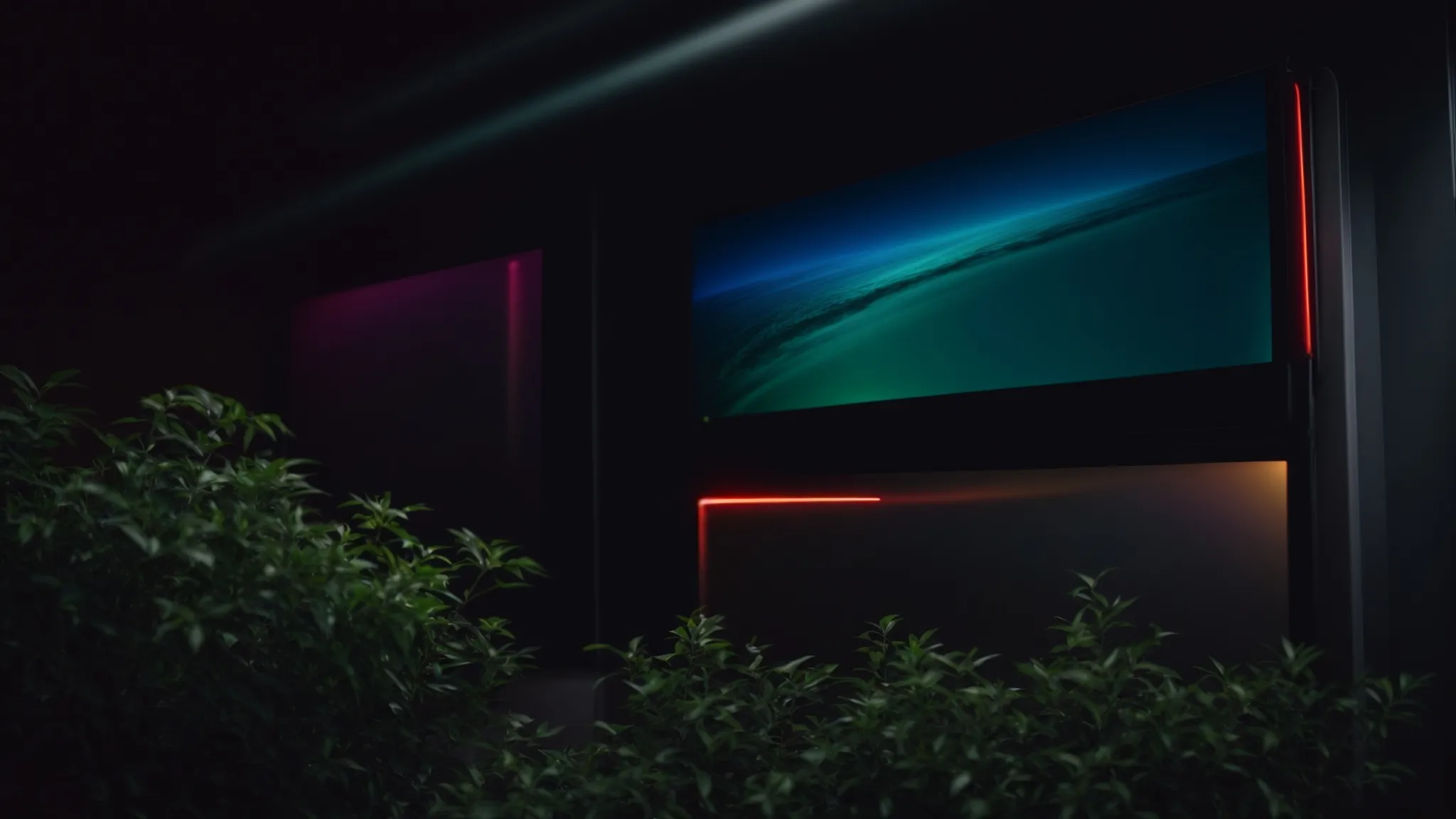
You might have often come across the term LED, but have you delved into what it precisely stands for?
LED is an acronym for Light Emitting Diode, a pivotal component that has revolutionized the way we perceive and utilize light in display technology.
In the sections that follow, you’ll journey through the intricate mechanics that render LEDs capable of producing vivid, high-resolution images.
You’ll also trace the evolutionary path of LED technology, from its initial invention to its current status as a cornerstone in the digital display landscape.
Prepare to uncover the layers behind this acronym, gaining insight into the science and the stories that have propelled LEDs to the forefront of visual solutions.
Unraveling the Acronym
Delving into the fabric of LED technology starts with understanding its foundational element, encapsulated in the term “LED.” It stands for Light Emitting Diode, a semiconductor device that turns electrical energy directly into light. This capacity to efficiently convert energy distinguishes LED from older lighting technologies, marking a significant shift in how illumination is generated and utilized in digital displays.
At the heart of each LED is a piece of carefully engineered semiconductor material. When electric current flows through this material, it prompts electrons to recombine with holes, releasing energy in the form of photons—the basic unit of light. This process, known as electroluminescence, is what gives LEDs their characteristic brightness and vibrant colors, enabling them to produce images of remarkable clarity and depth.
The Mechanics of LEDs
Diving deeper into the mechanics of LEDs, it’s essential to grasp how these devices manage to emit light with such efficiency and vibrancy. At the core of an LED is a semiconductor, structured in a way that allows it to conduct electricity under certain conditions. This semiconductor is key, facilitating the movement of electrons through the material and, crucially, across a junction where they release energy in the form of visible light.
This process starts when you apply a voltage across the LED, prompting an electric current to flow. As the current moves through the semiconductor, electrons are excited to higher energy states. When they return to their original state, they emit photons, producing the bright and colorful light we see. The color of the light is determined by the semiconductor material and the energy gap between these states, allowing LEDs to cover the wide spectrum of colors that enhance your viewing experience.
The Evolutionary Journey of LED Technology
The evolutionary journey of LED technology began with a simple discovery: the semiconductor’s ability to emit light, a phenomenon first observed in the early 20th century. Yet, it wasn’t until the 1960s that Nick Holonyak Jr. invented the first practical visible-spectrum LED, laying the foundation for the vibrant, high-resolution displays we interact with today.
From these initial steps, LED technology has advanced dramatically, propelling the development of displays with unparalleled brightness, color accuracy, and energy efficiency. This relentless innovation has shifted LEDs from niche applications to the forefront of digital display solutions, revolutionizing entertainment, advertising, and everyday communication.
Discovering the mysteries behind LED illuminates the beginning of our digital visual journey. Next, let’s unravel the significance of pixel density and why it transforms your viewing experience.
What Does Pixel Density Mean?
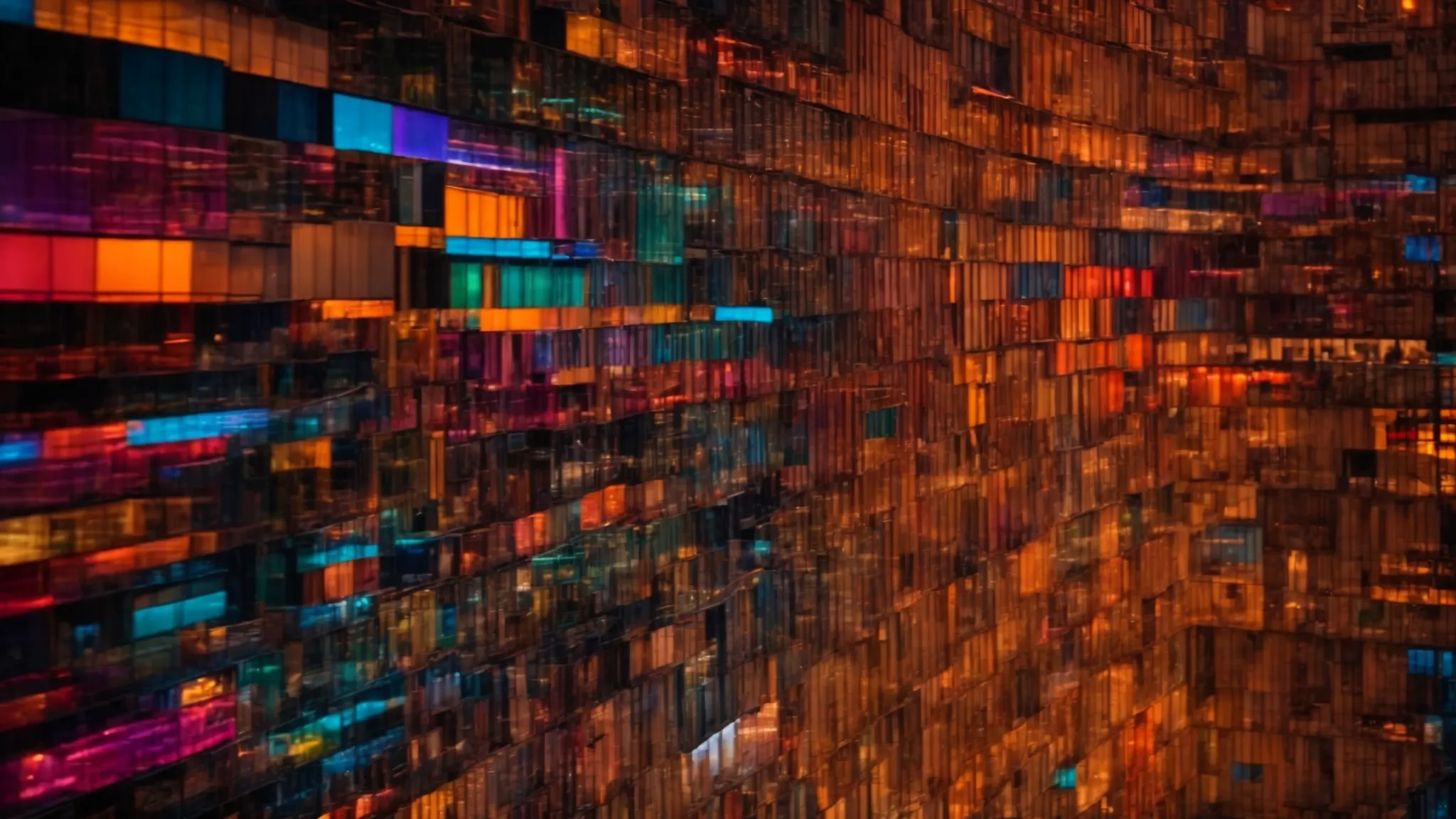
Shifting our focus to an aspect pivotal in determining the visual integrity of any display, let’s delve into the concept of pixel density.
This metric is intrinsic to assessing the sharpness and overall image quality that LED screens offer.
Pixel density, measured in dots per inch (DPI) or pixels per inch (PPI), represents the number of individual pixels within a one-inch line of a display. For a deeper understanding of pixel density and its relevance in LED technology, the concept of pixel pitch is crucial.
Understanding this parameter is crucial, as it directly impacts the richness and detail of the content you view.
Through segments like “Pixel Density Uncovered” and “Deciphering Pixel Density,” you’ll gain insights into why higher pixel densities translate into more immersive and detailed viewing experiences, illustrating the importance of this factor in selecting the right LED screen for your needs.
Pixel Density Uncovered
Pixel density, often measured in dots per inch (DPI) or pixels per inch (PPI), is a crucial factor that shapes the visual clarity of an LED screen. Higher pixel density means that more pixels are packed tightly together within a given space, resulting in finer detail and smoother lines for a more lifelike image.
This concentration of pixels plays a pivotal role in enhancing your viewing experience by delivering sharper, more defined images. It’s a key attribute that differentiates one display from another, directly influencing how engaging and immersive the content appears to the human eye.
The Role of Pixel Density in Image Quality
The impact of pixel density on image quality is profound, acting as a cornerstone for high-definition viewing. A higher pixel density ensures that individual pixels are less discernible to the naked eye, rendering a seamless and sharp visual output that enhances your engagement and enjoyment with the on-screen content.
In your quest for the perfect LED screen, bearing in mind the pixel density is essential. It determines the level of detail and clarity a display offers, elevating your visual experience by providing crisp and vibrant images, critical for applications where image fidelity and text readability are paramount.
Deciphering Pixel Density
Deciphering pixel density involves breaking down how many pixels an LED screen holds in every inch of its display, a vital metric in distinguishing display resolution and overall visual quality. The higher the pixel density, the more detailed and crisp the image or text appears, making every visual element on the screen stand out with clarity. This ensures your experience, whether viewing photos, reading text, or watching videos, is markedly enhanced.
Understanding this concept elevates your ability to choose the right LED screen that matches your specific visual needs. Whether it’s for a digital billboard where visibility from a distance matters or a smartphone where detail is paramount, knowing the pixel density offers a clear insight into the potential clarity and quality of the display you’re considering. It’s a fundamental element that has a direct impact on your viewing pleasure and the effectiveness of your visual communications.
Diving deeper into the display technology puzzle, let’s illuminate the distinct paths taken by LED and LCD. This next revelation is bound to turn the spotlight on how your screen lights up your world.
What’s the Difference Between LED and LCD?

Embarking on the journey to demystify the sometimes confusing landscape of display technologies, a pivotal destination is the distinction between LED (Light Emitting Diode) and LCD (Liquid Crystal Display) screens.
This segment not only aims to untangle the intricacies of how each technology functions but also casts a comparative light on their image quality, performance, energy efficiency, and durability.
Understanding the nuances that define these popular display options will empower you to make informed decisions tailored to your specific needs, whether for personal entertainment or professional applications.
Join us as we delve into a side-by-side examination, evaluating the strengths and weaknesses that distinguish LED screens from their LCD counterparts, thereby illuminating the path toward selecting the ideal technology for your viewing experience.
Dissecting the Display Technologies
Peeling back the layers of display technologies reveals fundamental distinctions between LED (Light Emitting Diode) and LCD (Liquid Crystal Display) screens that impact their performance and applications. While both are prevalent in today’s market, LEDs use direct light sources to illuminate the display, offering enhanced brightness and color contrast compared to LCDs, which rely on liquid crystals paired with a backlight.
This difference in illumination technique not only influences the vibrancy and sharpness of the image but also affects energy consumption and the device’s overall thickness. LED screens tend to be slimmer and more energy-efficient, making them a favored choice for both personal devices and large-scale digital signage. Understanding these contrasts aids in identifying the most suitable display technology for your specific requirements, whether for immersive entertainment or dynamic advertising.
Comparative Analysis of Image Quality and Performance
Delving into the realm of display technologies, one finds that LED screens typically boast superior image quality and performance over LCD ones. The bright, dynamic visuals achievable with an LED’s direct lighting method surpass the more muted color and contrast profiles of LCDs, enriching your viewing with lifelike detail and vibrancy.
Furthermore, LED screens excel in performance by offering faster refresh rates and greater viewing angles. This ensures that fast-moving images appear smoother and that the display can be seen from wider positions without losing visual integrity, a pivotal factor in both personal entertainment setups and public digital signage.
Assessing Energy Efficiency and Durability
In the comparison between LED and LCD screens, a crucial aspect to consider is the superior energy efficiency offered by LED technology. These screens require less electricity to operate due to the inherent efficiency of diodes in converting electric current into light, resulting in a noticeable reduction in your energy bills and contributing to a greener environment.
Moreover, LED screens are renowned for their remarkable durability. Thanks to the solid-state construction of LEDs, these displays are less susceptible to damage from impact or vibration, extending their operational lifespan significantly beyond that of LCD panels. This resilience makes LED screens a wise investment for both commercial and personal use, ensuring reliability and quality performance over many years.
Unveiling the differences between LED and LCD opens a new chapter in our visual tech adventure. Let’s ignite your imagination with the dynamic world of LED screen walls and their transformative uses.
Common Uses for LED Screen Walls

LED screen walls, vibrant and dynamic, have transcended being mere display panels to become pivotal elements across a plethora of domains.
Through their integration into advertising and public spaces, they command attention and engage audiences with unparalleled visibility.
This technology steps into the limelight, enhancing entertainment and events with its capacity to transform venues into immersive experiences.
Beyond the spectacle, LED screens serve as a critical tool for disseminating information and facilitating communication, proving indispensable in arenas where imparting knowledge and ensuring connectivity are key.
Each of these applications underscores the versatility and impact of LED screens, cementing their role in shaping the visual landscape of our communities.
LEDs in Advertising and Public Spaces
In the bustling arenas of advertising and public spaces, LED screens have become instrumental in capturing the transient gaze of passersby. Their luminous display and commanding presence break through the clutter of traditional media, offering a dynamic platform for brands and messages to resonate with a wide audience.
Public squares, transportation hubs, and shopping malls are increasingly adorned with these digital canvases, transforming mundane environments into interactive gateways. LED screens serve not just as advertising billboards but as communal beacons that host a gamut of content, from critical public service announcements to real-time community messages, enriching the social fabric of spaces with vibrant visuals and timely information.
LEDs Elevating Entertainment and Events
LED screens elevate entertainment and events by transforming spaces into dazzling spectacles, capable of engaging audiences in a truly immersive experience. The deployment of large-scale LED video walls at concerts and festivals, for instance, creates a visually captivating backdrop that enhances the performance, allowing every attendee, regardless of their location, to feel an intimate connection with the artists on stage.
In addition to live events, LED screens play a crucial role in modern entertainment venues, such as stadiums and theaters, where the clarity and brightness of the display enrich viewer experience. This technology ensures that every moment, from dramatic plays to thrilling sports action, is captured with stunning detail and vibrancy, bringing the spectacle closer to the audience and elevating the overall event experience.
LEDs for Information Dissemination and Communication
LED screens serve as a powerful medium for transmitting valuable information and facilitating communication across various platforms. Their brilliant displays ensure messages capture attention, making them ideal tools for emergency broadcasts, educational content, and corporate announcements in both public and private spaces. For more specialized applications, consider exploring options such as LED screens for schools, which can enhance educational environments by providing dynamic and interactive learning experiences.
By integrating LED screens into transport stations, public squares, and institutions, you provide an immediate and accessible channel for disseminating critical updates, instructions, and educational material to a broad audience. This application of LED technology underscores its significance in building informed communities and fostering effective communication networks.
Transitioning from the dazzling applications to a fundamental aspect, let’s explore how long these LED screens can truly shine. Buckle up, as the lifespan of these dynamic displays might just surprise you.
The Lifespan of LED Screens
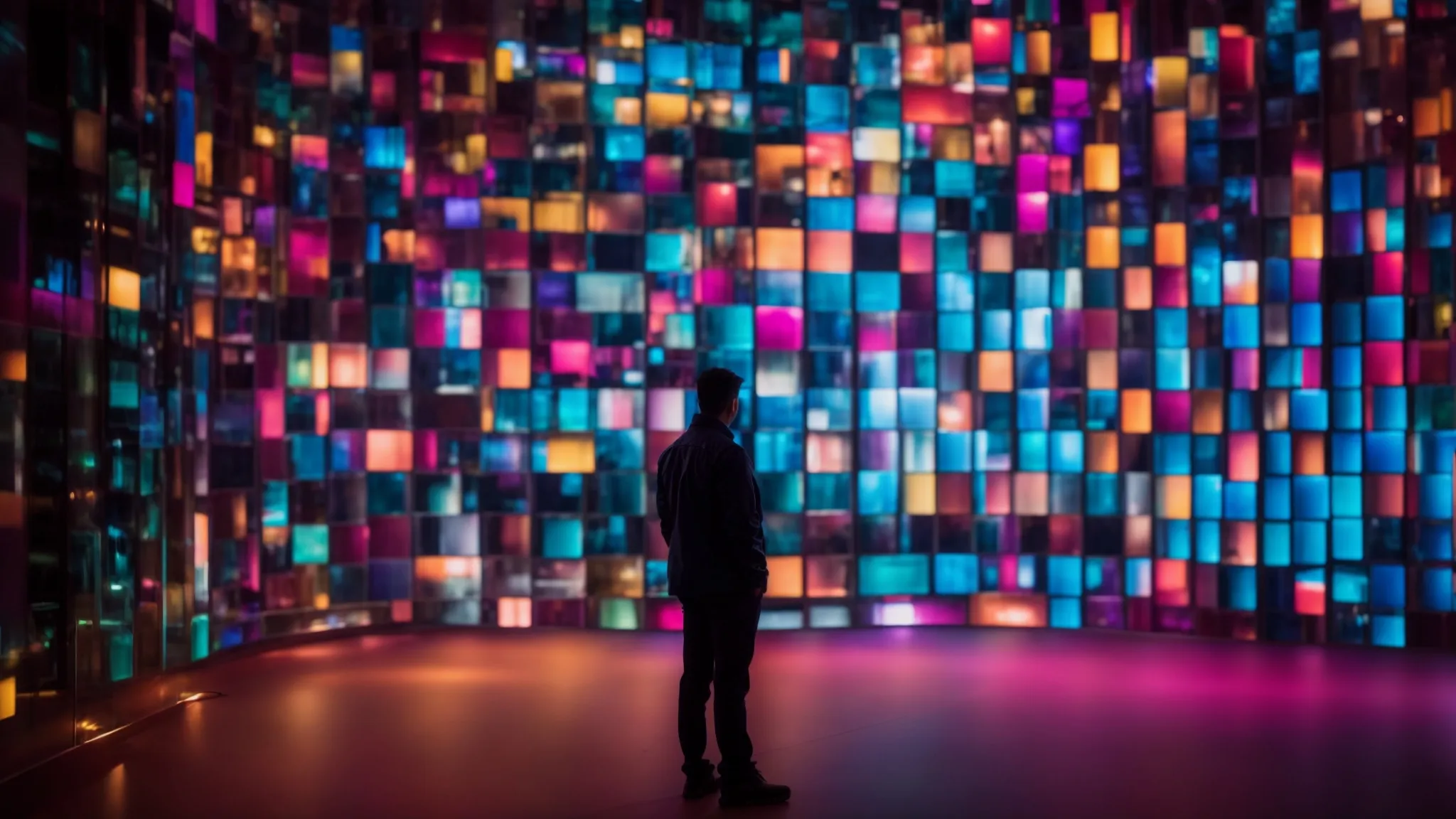
Embarking on an in-depth journey into the nuances of LED screen sustainability, one delves into the factors that sculpt an LED screen’s lifespan, the proactive measures you can take to prolong its functionality, and the telltale signs signaling the need for an upgrade.
As these displays continue to occupy an increasingly central role in visual communication and technology, understanding their durability becomes essential.
This exploration not only offers you a roadmap to maximize your investment in LED technology but also ensures that your screen remains vibrant and effective over its service life, all the while providing guidelines for recognizing the juncture at which transitioning to a new LED screen becomes imperative.
What Determines an LED Screen’s Lifespan?
The durability and operational lifespan of an LED screen are primarily influenced by the quality of its components and the environment in which it operates. High-grade diodes, efficient thermal management systems, and robust semiconductors are fundamental for maximizing longevity, ensuring your LED screen remains luminous and functional over extended periods.
External factors such as exposure to extreme temperatures, humidity, and direct sunlight can accelerate wear and reduce the screen’s lifespan. Therefore, proper installation in a controlled environment, coupled with regular maintenance, is crucial for preserving the screen’s condition and extending its service life, allowing you to enjoy vibrant displays for years to come.
Extending the Life of Your LED Screen
To enhance the longevity of your LED screen, prioritizing regular maintenance is paramount. This includes cleaning the display surface gently to prevent dust accumulation and monitoring system performance to identify any potential issues early on. An effective maintenance routine preserves the vibrant quality of your display and mitigates against premature wear.
Another critical strategy involves optimizing the usage conditions of your LED screen. Ensure that the screen operates within manufacturer-recommended temperature and humidity levels and avoid overdriving the display with excessively high brightness settings for prolonged periods. By adhering to these operational guidelines, you safeguard the components from undue stress, thereby extending the operational life of your LED display.
Signs It’s Time for a New LED Screen
Recognizing the markers indicating it might be time for a new LED screen is key in maintaining optimal visual performance. Diminished brightness or uneven lighting across the display heralds the aging of your screen’s diodes, impacting the clarity and vibrancy that are hallmarks of LED technology.
An increase in dead or stuck pixels, where certain spots on the screen fail to change color or light up, suggests a decline in the screen’s health. This visual impairment compromises image quality and could detract from the viewer’s experience, signaling that an upgrade to a newer model could be beneficial.
Eager to learn more about LED screens? Let’s dive into some of the most common questions that pop up!
Frequently Asked Questions
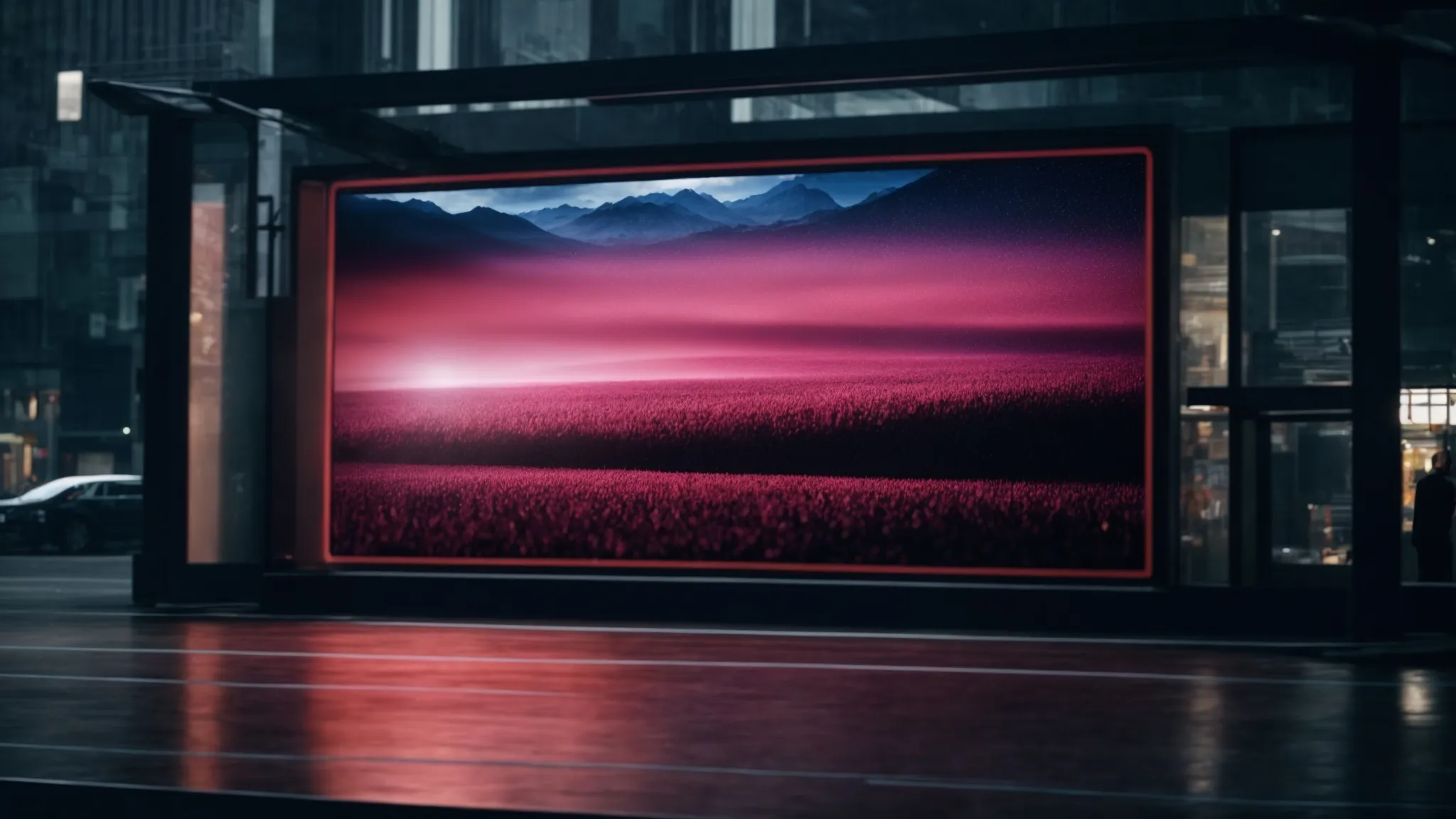
How long do LED screens typically last?
The lifespan of an LED screen is significantly affected by its design, the quality of its components, and the environment in which it is used. Generally, you can expect an LED screen to offer between 80,000 to 100,000 hours of operation before encountering noticeable degradation in performance or brightness. This translates to nearly a decade of use if operated for around 10 hours a day, showcasing the durability and reliability of LED technology.
Factors such as the intensity of use, exposure to harsh environmental conditions, and adherence to recommended maintenance practices will influence the actual operational life of an LED screen. Ensuring that the screen is not subject to extreme temperatures, dust, or moisture, and adjusting the brightness according to the need can help in maximizing its lifespan, allowing you to enjoy vibrant and clear visuals for years to come.
Can LED screens be used outdoors in all types of weather?
LED screens are engineered with resilience in mind, allowing them to operate effectively in diverse outdoor conditions. Their robust construction ensures they withstand varying weather elements, from scorching heat to freezing cold, without compromising on performance or clarity. Manufacturers often employ waterproofing techniques and materials that enhance this durability, making them suitable for outdoor entertainment, advertising, and information sharing.
However, for optimal functionality and longevity in extreme weather, it’s crucial to choose LED screens specifically rated for such conditions. Products designed for outdoor use are tested against rigorous standards to tolerate moisture, dust, and UV exposure, ensuring they maintain visibility and performance. Additionally, advanced features like automatic brightness adjustment contribute to their adaptability across different weather scenarios, enhancing their utility in outdoor settings.
What is the difference between an LED screen and an OLED screen?
The distinction between an LED screen and an OLED screen lies primarily in the manner by which they generate light. While LED screens utilize an array of light-emitting diodes to backlight a liquid crystal display, OLED screens stand apart by incorporating organic compounds that emit light in response to an electric current, eliminating the need for a separate backlight.
This fundamental difference enhances the visual experience OLED screens offer, with deeper blacks and a higher contrast ratio, since each pixel can be individually turned on or off. The absence of a backlight in OLED technology also allows for thinner, more flexible display panels, contributing to innovative design possibilities in the devices you use.
Are LED screens better for the environment than traditional display technologies?
LED screens represent a significant advance over traditional display technologies in terms of environmental impact. Their superior energy efficiency—achieved through the direct use of diodes that convert electricity into light with minimal waste—means lower electricity consumption and a corresponding reduction in greenhouse gas emissions. This characteristic not only makes LED screens more cost-effective but also significantly lessens their carbon footprint, aligning with global sustainability goals.
Furthermore, LED technology is noted for its lack of toxic elements such as mercury, which is often found in florescent lamps used in older display systems. The absence of such hazardous materials not only simplifies the recycling process but also reduces the potential for environmental pollution. By choosing LED screens, you’re opting for a solution that is both environmentally friendly and conducive to a healthier planet.

